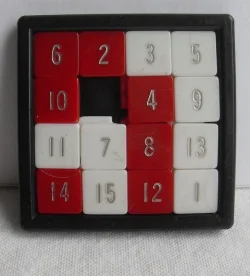skribs
Grandmaster
I find forms to be useful. Even in as much as I don't see a direct application in the Taekwondo forms, there are a lot of benefits I still see. I understand that the forms:
It's not just my school, but at a lot of Taekwondo schools I see this happen. My school has the 5 Kibons, 8 Palgwes, 8 Taegeuks, the Yudanja, and variants of the Yudanja. I have 28 forms so far (not including weapons). My old school had dozens of Exercises (mini forms), 5 Kibons, 8 Palgwes and 8 Taegeuks just to get black belt.
I've also seen a lot of schools online that have various combinations of the forms from different sources. This is especially common in dual-certified schools (i.e. an ATA/KKW school) where you have forms from both affiliations, or maybe the instructor came over from a dual school and retained most of his old forms. Maybe the forms come from a smaller organization before the Master was ranked in the larger organization, or maybe they were created in-house.
Whatever the reason, I don't personally think there's much benefit in having more forms. I think after a point, the diminishing returns really start to kick in. Your mind already talks to your body, you already have built the attention to detail, the stances, the muscle memory, and the balance and coordination. If you already know a dozen forms or so, what is the benefit of continuing to learn more forms, instead of spending more time on drills and sparring?
- Help us work on our stances and technique by building muscle memory
- Exercise our brain to work on memorization and attention-to-detail, which is most important for young and old students (i.e. under 10 or over 50)
- Work on the communication between our minds and bodies so our body can actually follow the directions our mind is giving it
- Work on balance, coordination, and specific conditioning
It's not just my school, but at a lot of Taekwondo schools I see this happen. My school has the 5 Kibons, 8 Palgwes, 8 Taegeuks, the Yudanja, and variants of the Yudanja. I have 28 forms so far (not including weapons). My old school had dozens of Exercises (mini forms), 5 Kibons, 8 Palgwes and 8 Taegeuks just to get black belt.
I've also seen a lot of schools online that have various combinations of the forms from different sources. This is especially common in dual-certified schools (i.e. an ATA/KKW school) where you have forms from both affiliations, or maybe the instructor came over from a dual school and retained most of his old forms. Maybe the forms come from a smaller organization before the Master was ranked in the larger organization, or maybe they were created in-house.
Whatever the reason, I don't personally think there's much benefit in having more forms. I think after a point, the diminishing returns really start to kick in. Your mind already talks to your body, you already have built the attention to detail, the stances, the muscle memory, and the balance and coordination. If you already know a dozen forms or so, what is the benefit of continuing to learn more forms, instead of spending more time on drills and sparring?

